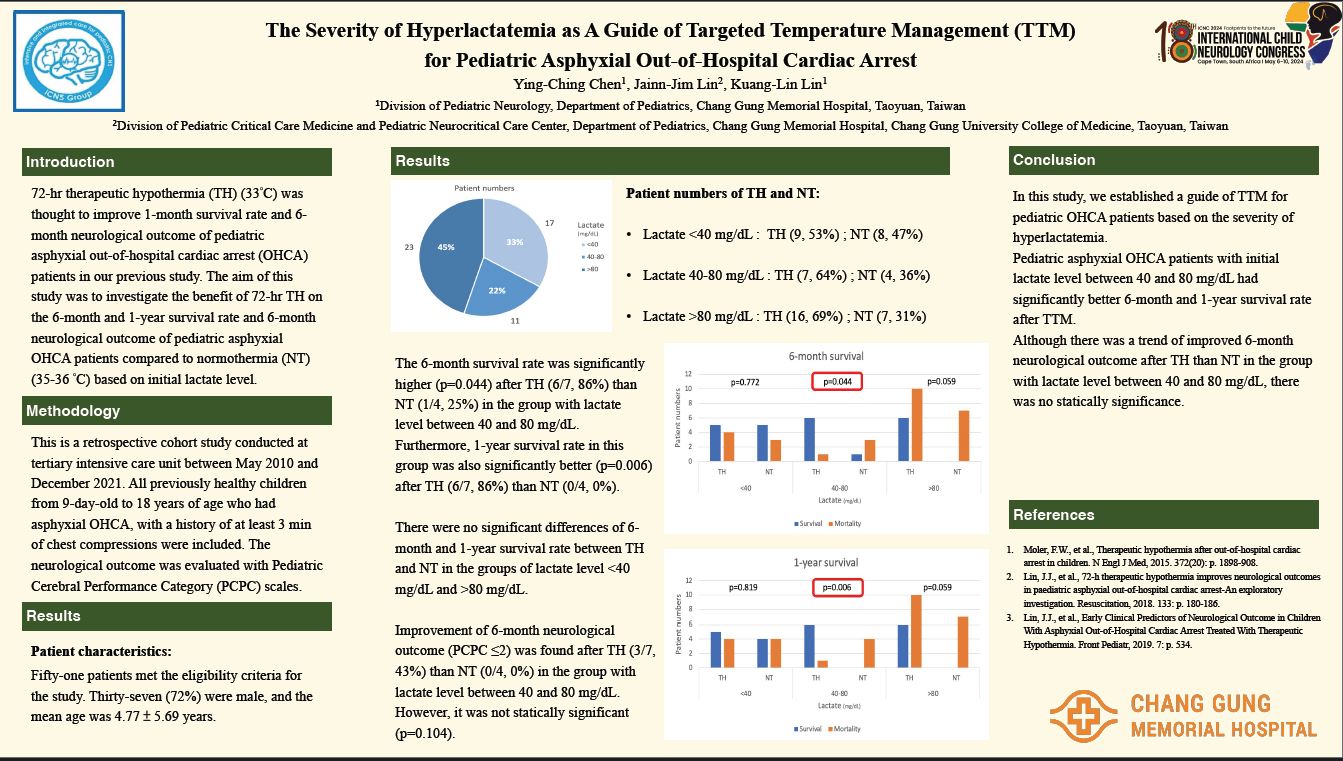The Severity Of Hyperlactatemia As A Guide Of Targeted Temperature Management (TTM) For Pediatric Asphyxial OHCA
Background: 72-hr therapeutic hypothermia (TH) (33°C) was thought to improve 1-month survival rate and 6-month neurological outcome of pediatric asphyxial out-of-hospital cardiac arrest (OHCA) patients in our previous study. The aim of this study was to investigate the benefit of 72-hr TH on the 6-month survival rate of pediatric asphyxial OHCA patients compared to normothermia (NT) (35-36 °C) based on initial lactate level. Method: This is a retrospective cohort study conducted at tertiary intensive care unit between May 2010 and December 2021. All previously healthy children from 9-day-old to 18 years of age who had asphyxial OHCA, with a history of at least 3 min of chest compressions were included. Those who had no initial lactate level documented were excluded. Result: Forty-eight patients met the eligibility criteria for the study. Thirty-six (75%) were male, and the mean age was 3.91 ± 5.09 years. Patient numbers of lactate level <40 mg/dL, 40-100 mg/dL, >100 mg/dL were fourteen (29.1%), eighteen (37.5%), sixteen (33.3%), respectively. The 6-month survival rate was significantly higher (p=0.003) after TH (9/12, 75%) than NT (0/6, 0%) in the group with lactate level between 40-100 mg/dL. However, there were no significant differences of 6-month survival rate between TH and NT in the groups of lactate level <40 mg/dL (p=0.577) and >100 mg/dL (p=0.195). Conclusion: According to the severity of hyperlactatemia, pediatric asphyxial OHCA patients with initial lactate level between 40 and 100 mg/dL had significantly better 6-month survival rate after TH and should be as a guide of TTM.
Ying-Ching Chen
Chang Gung Memorial Hospital
Taiwan
Jainn-Jim Lin
Chang Gung Memorial Hospital
Taiwan
Kuang-Lin Lin
Chang Gung Memorial Hospital
Taiwan

Ying-Ching Chen
Chang Gung Memorial Hospital
Taiwan